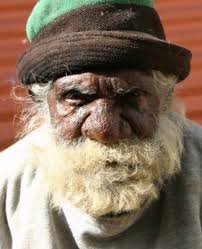KUDDITJI KNGWARREYE
MARKET ANALYSIS

Kudditji Kngwarreye was one of the most prolific artists in the primary market since 2005. Independent, and living in Alice Springs, he painted for a number of wholesalers and his works were distributed to a large number of galleries and retailers throughout the country. He began painting in the late 1980s (in the same year as his sister Emily Kngwarreye) and continued throughout the 1990s creating images of the his Emu Dreaming in a typically male Utopia style without particular distinction.
Though far better known for the loose gestural and highly colour charged paintings that he has created since 2003, it was one of his traditional Emu Dreaming images that set his record price in at Sotheby’s in October 2009. The work, being de-accessioned from Trevor Chappell’s Austcorp Property Group collection had been estimated at just $500-1000. Measuring 206 x 120 cm. it sold for a whopping $19,200.
The only other work in this style that has entered his highest 10 results measured 152 x 106 cm. It was created in 1999 and sold at Paris auction house ArtCuriel for $6,255 in November 2009. Another older style 133 x 82cm work, though far more accomplished than that which set his current record, sold for just $1,320, including buyers premium at Leonard Joel in October 2010 (Lot 312). This was undoubtedly an opportunity missed. Not one canny investor appeared aware of the record-setting price achieved for an inferior work during the previous year.
Two artistically unsuccessful canvases created in a transitional style, reminiscent of his sister’s ‘line’ paintings, sold for just $1,500 and $1,800 when offered at Leonard Joel during 2008. Though historically interesting, works in this style gave way to colour field paintings, for which he is now largely renowned. Though seven works have sold for more than $9000, Kudditji’s auction results are dominated by sales for less than $3000 (48) and unsold works (47). Overall his success rate has been only 57%. This is not surprising given the vast quality of his paintings that were offered for sale in the primary market during the final years of his life. Kudditji died in 2016, and it is likely that there will be a market readjustment as a result of this.
Dealers and opportunistic ‘investors’ have largely failed in their attempts to firmly establish Kudditji amongst the most collectable artists since 2005. Though his sales during 2009 saw him listed as the 23rd most successful artist in that year, and 2010 saw him listed as 96th, he actually fell by the end of 2011 from 130th to 131st of the entire movement overall. A better year in 2016 saw him finish the year at 42nd, and this lifted his career standing to 113th. This can be attributed to the fact that 11 of 15 sold that year for a success rate of 73%.
The jury is out on Kudditji Kngwarreye. Clearly, he is an example of an artist whose stocks are on the rise. His secondary market results are yet to reflect the hype that surrounded his work in the primary market post-2012. Those who paid top dollar for his best works in primary galleries during the past 5 years will be disinclined to trade them in until his patchwork blankets of colour have had time to appreciate.
Utopia artists largely paint outside of the art centre system. And though the current market tends to favour ‘officially’ sanctioned works, a flood of paintings on the primary market never hurt Emily, Gloria Petyarre or Minnie Pwerle. Only time will tell whether paintings by this old man will rate amongst those of his more illustrious female relatives.
© Adrian Newstead

